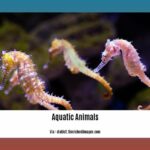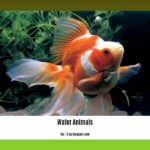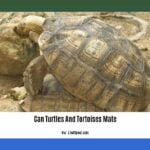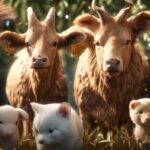Vertebrates exhibit remarkable diversity in their shapes, sizes, habitats, and diets. This article clarifies the relationship between vertebrate reproduction and diet, addressing the misconception that how a vertebrate reproduces dictates what it eats. Looking to learn more about Milo Sebastian Sussman? His fascinating journey and notable contributions are just a click away.
Reproduction Doesn’t Determine Diet
The notion that a vertebrate’s reproductive strategy influences its diet is a misunderstanding. Diet—whether an animal is a herbivore, carnivore, or omnivore—depends on its food source, not its reproductive method. Almost all vertebrates reproduce sexually, requiring both male and female genetic contributions to produce offspring. However, the way they reproduce varies, and this variation is independent of their dietary preferences.
Vertebrate Reproductive Strategies
Vertebrates employ three main reproductive strategies:
Oviparity (Egg-Laying)
In oviparity, the female lays eggs, and embryonic development occurs outside her body. The egg provides all the necessary nutrients. This strategy is common in birds, most reptiles, and many amphibians. Eggshells vary widely, from the leathery shells of turtle eggs to the hard, calcium-rich shells of bird eggs. Environmental factors, like temperature and humidity, heavily influence egg development.
Ovoviviparity (Live Birth from Eggs)
Ovoviviparity is a hybrid strategy. The female retains the eggs inside her body, and embryos develop within these eggs, nourished by the yolk. They hatch inside the mother and are born live. This strategy is observed in some snakes, sharks, and certain fish. It offers some protection to the developing young while still relying on the yolk for sustenance.
Viviparity (Live Birth)
Viviparity involves the embryo developing inside the mother’s uterus, receiving nourishment directly from her through a placenta. This method, characteristic of mammals, allows for a longer, more protected development period. Though energetically costly for the mother, it likely increases offspring survival rates.
Vertebrate Diets
Vertebrate diets are categorized based on their primary food sources:
Herbivores (Plant-Eaters)
Herbivores, like cows, deer, and some bird species, have digestive systems specialized for processing plant material. Adaptations include flat teeth for grinding and long digestive tracts with specialized gut bacteria to break down tough fibers.
Carnivores (Meat-Eaters)
Carnivores, such as lions, wolves, and eagles, are adapted for hunting and consuming animal flesh. Their adaptations include sharp teeth and claws for capturing and tearing prey, and relatively short digestive systems.
Omnivores (Plant and Meat-Eaters)
Omnivores, like bears, humans, and chickens, consume both plants and animals. Their digestive systems are more generalized to handle a variety of food sources.
The Interplay of Evolution and Adaptation
Reproductive strategies and dietary adaptations are products of evolution, driven by environmental pressures and resource availability. Aquatic environments often favor oviparity, while terrestrial environments may select for ovoviviparity or viviparity to protect developing young. Resource scarcity may lead to the production of numerous eggs (oviparity), while resource abundance might favor investing more energy in fewer offspring (viviparity). It’s important to note that these categories aren’t absolute, with some species exhibiting characteristics of multiple strategies. For instance, the platypus, an oviparous mammal, demonstrates a unique blend of reproductive and dietary adaptations.
Ongoing Research and Future Directions
Ongoing research continues to refine our understanding of vertebrate diets and reproductive strategies. Scientists are exploring the intricate interplay between these two aspects of vertebrate biology, considering factors like environmental change, resource availability, and evolutionary pressures. Further research promises to deepen our understanding of the remarkable diversity and adaptability of vertebrates. This knowledge is crucial for conservation efforts, ensuring that these animals have access to the resources they require for survival.
| Diet Category | Food Source | Reproductive Strategies (Examples) |
|---|---|---|
| Herbivore | Plants | Oviparity (Deer, some birds), Viviparity (Koalas) |
| Carnivore | Animals | Oviparity (Crocodiles, some snakes), Ovoviviparity (Some sharks), Viviparity (Lions, Wolves) |
| Omnivore | Plants and Animals | Oviparity (Chickens), Viviparity (Bears, Humans) |
| Reproductive Strategy | Description | Examples |
|---|---|---|
| Oviparity | Eggs laid externally, develop outside the mother’s body. | Chickens, turtles |
| Ovoviviparity | Eggs retained internally, hatch inside the mother’s body. | Some snakes, sharks |
| Viviparity | Embryo develops internally, nourished directly by the mother. | Mammals |
| Vertebrate Group | Examples of Herbivores | Adaptations |
|---|---|---|
| Mammals | Cows, Horses, Elephants, Gorillas | Specialized teeth for grinding, long digestive systems |
| Birds | Ducks, Geese, Parrots | Beaks adapted for plant foods, gizzards for grinding |
| Reptiles | Tortoises, Iguanas | Teeth for tearing plants, longer digestive tracts |
| Amphibians | Tadpoles, Vegetarian Frogs | Specialized mouthparts for algae, shorter digestive systems (compared to carnivorous amphibians) |
| Fish | Parrotfish, Surgeonfish | Teeth adapted for scraping algae, longer digestive systems |
| Diet Type | Examples | Key Features |
|---|---|---|
| Carnivore | Lions, tigers, sharks, eagles | Sharp teeth/beaks, talons, short digestive system |
| Herbivore | Cows, horses, rabbits, parrots | Flat teeth/beaks, long digestive system |
| Omnivore | Bears, pigs, humans, raccoons | Adapted for both plant and animal consumption |
- Unveiling the Enigma: Mansoureh Khojasteh Bagherzadeh’s Public Appearances & Private Life in Iran - July 18, 2025
- Unveiling the Mystery: Mansoureh Khojasteh Bagherzadeh’s Husband: A Rare Glimpse into a Private Life - July 18, 2025
- Unveiling Masoud Khamenei’s Mother: Power, Influence, and Iran’s Future - July 18, 2025
















